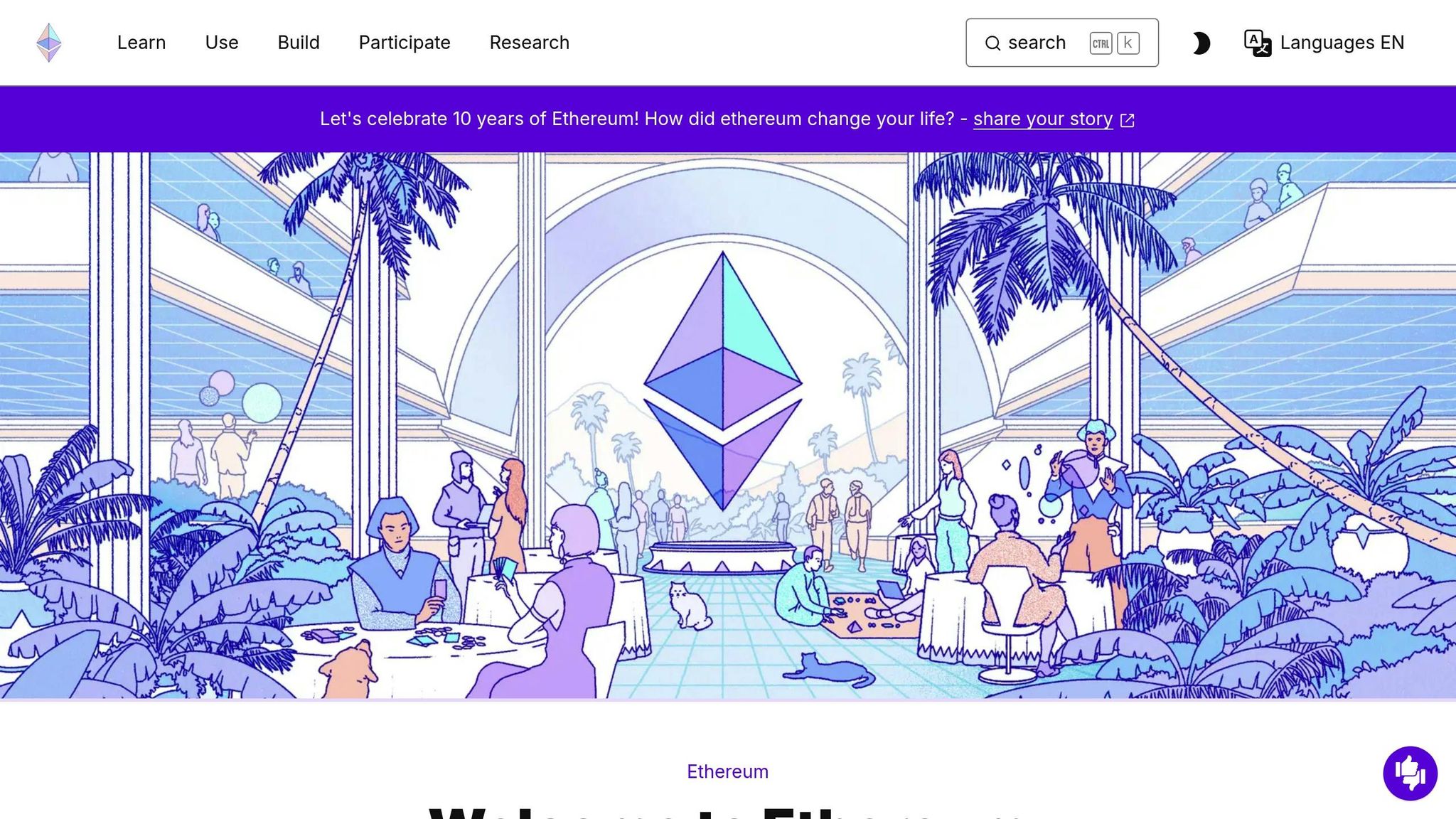Layer 2 networks are growing fast in 2025, with Total Value Locked (TVL) hitting record highs in Q1. Here’s what’s driving the surge:
- Ethereum‘s Dencun Upgrade: Lower fees, faster transactions, and better data availability have attracted users and institutional investors.
- Top Performers: Arbitrum and Optimism lead the market, while Base and zkSync Era show strong growth.
- DeFi Expansion: Reduced costs have boosted participation in lending, exchanges, and tokenizing real-world assets.
- Platform Upgrades: Arbitrum’s BoLD update and other improvements are increasing efficiency and user adoption.
- AI Integration: Smarter contracts and automation are reshaping how Layer 2 solutions are used.
TVL trends show that Layer 2 solutions are not only scaling blockchains but also connecting decentralized systems with traditional finance. Expect more growth as these platforms continue to evolve throughout 2025.
Ethereum Layer 2 TVL Sets a New All-Time High at $47 Billion

Layer 2 Market Status
Layer 2 solutions are playing a key role in tackling blockchain scalability issues as of Q1 2025. With the rising need for faster and more efficient transactions, this market is steadily evolving. Established protocols are delivering consistent performance, while new players are introducing advanced techniques to improve scaling.
Layer 2 Basics and Scalability
Layer 2 solutions are designed to ease congestion on the Ethereum network. These protocols handle transactions off-chain while maintaining the security of the main chain. The result? Faster transaction speeds and lower costs. Many of the leading Layer 2 networks now process significantly more transactions per second than Ethereum’s base layer, making them ideal for applications like decentralized finance (DeFi) and NFT marketplaces, where high-frequency transactions are common.
Ethereum Dencun Effects on Layer 2
The Ethereum Dencun upgrade, implemented in Q1 2025, has brought several changes. It has lowered data availability costs, reduced fees, and improved transaction finality. These improvements have also encouraged more institutional adoption by enabling a broader range of scalable use cases.
Q1 2025 TVL Data Analysis
TVL by Network
Q1 2025 saw record-breaking total value locked (TVL) figures. Arbitrum and Optimism maintained their positions in the market, while Base and zkSync Era experienced notable growth compared to Q4 2024. These changes highlight the key drivers behind the increase in TVL.
Factors Driving TVL Growth
Several factors contributed to the rise in TVL across Layer 2 networks:
-
Protocol Upgrades
The Dencun upgrade played a major role by lowering fees and improving efficiency, attracting more capital to Layer 2 solutions. -
Market Conditions
Positive market sentiment combined with growing interest from institutional investors significantly increased liquidity on Layer 2 platforms. -
Technical Improvements
Enhancements in throughput and interoperability made Layer 2 networks more appealing, fueling ongoing ecosystem expansion.
sbb-itb-c5fef17
Growth Factors and Updates
Several developments are reshaping the Layer 2 ecosystem, extending far beyond just TVL metrics.
Lower Fees and DeFi Expansion
In Q1 2025, protocol upgrades led to lower fees across Layer 2 networks, making these platforms more appealing to everyday users. With reduced transaction costs, participation in DeFi activities like lending and decentralized exchanges has grown. The ability to handle smaller transactions more affordably has opened the door for broader involvement in DeFi.
Platform Improvements
Arbitrum’s BoLD update introduced better data compression and improved cross-chain messaging, enhancing the network’s overall performance. Other advancements, including infrastructure upgrades, protocol tweaks, and stronger security measures, have further encouraged users to adopt these platforms. These updates are also shaping how users interact with Layer 2 solutions.
Shifts in User Behavior
Daily active addresses and transaction complexity have increased, driven by platform improvements and reward programs. The integration of AI into smart contract interactions shows how these platforms are advancing. Additionally, protocols focused on tokenizing real-world assets like treasury bonds and real estate have gained traction, reflecting a growing effort to connect decentralized systems with traditional finance.
Future Outlook
Layer 2 Development Path
Following recent increases in Total Value Locked (TVL) and platform updates, the focus is shifting toward advancing the technology further. Layer 2 solutions are making strides with features like AI-driven enhancements, which improve smart contract automation and overall system performance. As the need for scalable blockchain solutions grows – especially for handling complex DeFi operations while keeping costs low – network activity is expected to rise steadily through 2025.
Investment and Building Focus
As technological advancements lay the groundwork, investment trends are following suit, emphasizing the need for scalable and reliable infrastructure.
"Bestla VC is a pioneering web3-focus syndicate born from the fusion of leader experts in trading solutions." – Bestla VC
Investors are increasingly drawn to infrastructure projects that connect traditional finance with decentralized systems. Areas of focus include:
- AI-Web3 integration to enhance smart contract functionality and efficiency
- Developing financial infrastructure that bridges traditional and decentralized systems
- Employing advanced cryptography to deliver institutional-level security
These efforts are setting the stage for Layer 2 solutions to experience significant growth in 2025, especially in connecting traditional financial systems with decentralized networks.
Conclusion
The Q1 2025 TVL data reveals notable changes in the blockchain landscape, largely influenced by institutional involvement. The increasing overlap of AI and Web3 highlights a shift beyond just scaling, with TVL trends pointing toward solutions that connect traditional finance with decentralized systems.
Here are three key developments shaping the Layer 2 space:
- Improved Infrastructure and Adoption: AI-Web3 projects and growing institutional interest have driven TVL expansion.
- Integration with Traditional Finance: Financial institutions are adopting Layer 2 solutions, leading to the development of high-quality infrastructure and regulated marketplace strategies.
- Practical Use Cases: Projects like DePIN and ownership economy initiatives are proving blockchain’s real-world potential, becoming major contributors to TVL.
These changes indicate a more mature market, where technical advancements align with practical needs. For Web3 projects and investors, the focus should remain on creating solutions with practical applications while maintaining blockchain security and efficiency. With stronger regulation and infrastructure, Layer 2 growth appears set to continue steadily through 2025.
FAQs
What impact has the Ethereum Dencun upgrade had on the growth of Layer 2 solutions in early 2025?
The Ethereum Dencun upgrade has played a significant role in shaping the growth of Layer 2 solutions in early 2025. By improving scalability and reducing transaction costs on the Ethereum network, the upgrade has made Layer 2 platforms more attractive for developers and users alike. These enhancements have encouraged greater adoption of decentralized applications (dApps) and boosted Total Value Locked (TVL) across Layer 2 ecosystems.
Additionally, the upgrade has facilitated smoother interactions between Layer 1 and Layer 2 solutions, fostering innovation in areas like rollups and zero-knowledge proofs. This synergy has contributed to a more efficient and user-friendly blockchain ecosystem, driving the continued expansion of Layer 2 solutions in 2025.
What sets established Layer 2 networks like Arbitrum and Optimism apart from newer ones like Base and zkSync Era in Q1 2025?
The key differences between established Layer 2 networks like Arbitrum and Optimism and emerging ones such as Base and zkSync Era often lie in their underlying technologies, adoption rates, and use cases. Established networks typically have higher Total Value Locked (TVL) due to longer market presence and broader ecosystem support, while newer networks focus on innovative features like enhanced scalability or unique cryptographic methods to attract users.
For example, zkSync Era leverages zero-knowledge proofs for faster and more secure transactions, while Base, backed by Coinbase, emphasizes seamless integration with its parent platform. On the other hand, Arbitrum and Optimism rely on optimistic rollups, which are well-tested and widely adopted for scaling Ethereum applications. Each network’s TVL trends in Q1 2025 reflect these differences, as well as the evolving preferences of developers and users in the Layer 2 landscape.
How is AI shaping the development and adoption of Layer 2 solutions in decentralized finance?
AI is playing a pivotal role in enhancing the efficiency and scalability of Layer 2 solutions within decentralized finance (DeFi). By leveraging AI-driven algorithms, these solutions can optimize transaction speeds, reduce costs, and improve security, making DeFi more accessible and user-friendly.
Beyond DeFi, AI is also driving innovation in areas like predictive analytics, fraud detection, and automated smart contract management, further boosting the adoption of Layer 2 technologies across diverse industries. As the intersection of AI and Web3 continues to evolve, it is expected to unlock even greater potential for decentralized ecosystems.


